Artorius, Pendragon of Britain
Information on contents and insights (click here)
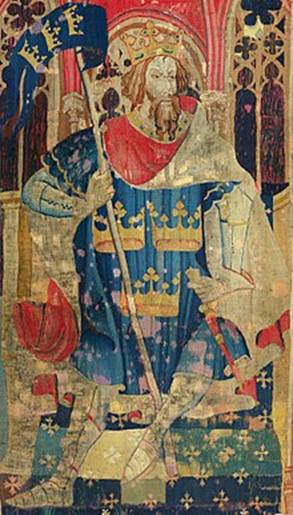
Artorius is a character from After Rome, but his historical existence is only hypothetical. So, it is important to clarify this right away: I am not a historian and I am not proposing a historical theory. "King Arthur" is a legendary character and probably elaborated centuries after his alleged action; there are no credible proofs of his real existence, much less details of his deeds.
But he is one of the most relevant characters in the Dark Ages epic as such, and one of the most important of the whole legendary European tradition. The figure of him is deeply rooted in folklore not only in Britain but in the entire West and represents the prototype of the legendary knightly king of the Middle Ages.
Few characters have been examined in more detail and have attracted more attention from experts in every field, and the very few traces he may have left in history have been thoroughly examined for centuries, so I do not intend to replace those who continue to investigate with a much better preparation than me.
These brief notes do not ask to be added to the already existing historical literature on the subject: they just want help framing the character of our narrative cycle, starting from the current academic consensus on it: there is no evidence of the historical existence of "King Arthur", but there is not not of the fact that it did not exist, either.
Certainly, the narrative corpus about him is almost totally invented, but the context in which he may have acted is real, and certainly very dark.
From this characteristic common to all the other main components of this project that we call After Rome, we have developed, as in other ambiguous cases, a character who wants to be plausible and congruous to the historical scenario in which he is placed, but that in no way we intend to offer as a historical version; at most, we suggest a possible scenario, even if it is not demonstrable.
Let's start from the beginning: clear of all the countless subsequent novels, there are only four historical sources (non-fictional!) on Arthurian lore, that are relevant and sufficiently ancient to appear more or less credible and relevant:
- De Excidio et Conquestu Britanniae by Gildas, a British monk of the 5th-6th century, the only one to write as a contemporary or nearly contemporary. In his text, which has a moralizing and not a historical purpose, Gildas NEVER mentions Arthur. However, he cites the classic events and context of his story, including the battle of Mons Badonicus (Badon Hill) which would not only repel but completely defeat the Saxon invasion and ensure a generation of peace before a subsequent phase of internal civil decay that would have led to post-Roman Briton civilization to collapse and submit to the rising Anglo-Saxon kingdoms.
- Historia Brittonum, attributed to the religious Nennius, who would have compiled it in the second half of the eighth century. It therefore reports facts and characters from almost three hundred years earlier, about which the author presumably has an almost exclusively oral knowledge and therefore most likely distorted. Nennius is the first to name Arthur: he mentions his twelve main battles and how his title was dux bellorum (military leader) and not king.
- Annales Cambriae, composed by various anonymous authors in the mid-10th century. It details the battle of Badon and also Arthur, mentioning his death which would have occurred in the later battle of Camlann; the two events are also dated - respectively to 516 and 537 AD - but we must remember that at the time the dating was still confused as the system of the Anno Domini calendar had been introduced relatively recently. In any case, when the Annales speak of Arthur, they refer to events over 400 years old.
- Historia Regum Britanniae, by Geoffrey of Monmouth, dated 1136. It is a pseudo-historical work with more narrative than information purposes, and deals with events that took place specifically over 600 years earlier: to understand the time gap, it is as if today we were writing the history of 1400s Italy, but without possessing other sources than family memory and Decameron-style legends. Geoffrey is the true inventor of the character Arthur, whose fictional adventures he describes clearly drawing on Gildas, Nennius and a number of Welsh ballads.
As we can see, the sources are extremely thin. The fundamental reason why modern historians largely reject Arthur's historicity is that Gildas, does not name him. Since Gildas is the only contemporary source, it appears at least suspicious that while he mentions the name of a certain number of leaders of his time, he does not mention the leader of that battle of Mons Badonicus that he first describes as fundamental for his time and for the next generation.
From a strictly professional and analytical point of view, this is a sacrosanct position... But just as sacrosanct is to specify that there is no evidence that an Arthur did not exist. The fact that it appears in later, not contemporary sources, and also decidedly unprofessionally written from the modern point of view, is easily attributable to the legendary and folkloristic infiltrations that have arisen over the centuries between Gildas and Nennius. It is as if today we attribute to the Arthurian novels of the twentieth century the dignity of historical source on the subject.
Having specified the above though, and returning to the context of the fifth century and the fog that envelops most of the events and characters of the period, it is necessary to observe some other interesting elements.
Both Gildas and his successor chroniclers are ecclesiastics. The same consideration made on other characters of the period can therefore also apply to "King Arthur": the Church of the time had its priorities, which included first of all the obligation to educate believers, convert pagans and oppose heresies. Therefore, any historical event or character that did not contribute to a "correct" (today we would add politically) narration of History - handed down almost exclusively by clerics - had to be reviewed and if necessary censored. We cannot therefore exclude that for some reason "King Arthur" did not meet the favour of the Church of his time and consequently had to be removed. This could in turn explain the failure in quoting his name (or tits subsequent cancellation) from the Excidio.
Another pertinent observation is that if it is true that Gildas does not mention Arthur as the British commander at the battle of Mons Badonicus, it is also true that he does not mention any other: it seems at least strange that when celebrating a great victory, the victorious leader is not even mentioned. There are numerous evidences on the names of the British leaders of the time, with approximate but sufficiently accurate chronological references. It is generally accepted that there was an Ambrosius Aurelianus, military commander of a still substantially Roman Britannia at war against the mutinous Saxon auxiliaries commanded by the brothers Hengist and Horsa: according to what we know, this specific leader would have died (probably of plague) around 475 AD, and Gildas duly mentions him.
We also know from Gildas himself and others, that around 540 AD the perfidious Maelgwn becomes lord of North Wales, the dux Conomorus rules Dumnonia and the Saxon Echwin founds Essex. These are the years of the Gothic-Byzantine war and above all of the great Plague of Justinian, which at the same time distracted contemporary reliable sources and also dramatically reduce them in number. However, it seems suspicious that the chronicles have handed down the names of the leaders until 475 and then again starting from 540, leaving a void of about half a century during which, however, a particularly significant event would have taken place such as the battle of Mons Badonicus. The suspicion increases if we also examine the Anglo-Saxon Chronicle, the Teuton equivalent of the Annales, and we see that during the same period the Saxons did not name any Brethwalda, that is, no supreme leader of theirs: the information vacuum of that short period therefore appears to exist from both the parties to the conflict, just as if it resulted from a subsequent censorship by someone with the authority to intervene on the compilation or on the transcription of both.
At this point it is undeniable that these suspicious events leave the space for a very specific period during which a Roman-British leader (or more than one in succession), probably somehow disliked by the Church, has defeated the Saxons at Mons Badonicus and imposed a period of relative peace and mutual assimilation; at the end of this period a series of conflicts between the local potentates and the arrival of the plague would have led to the disintegration of the last Roman institutions and to the consequent anarchy on the island.
This is obviously a hypothesis, but it is a fact that from the moment the chronicle restart, the progress of the Saxons will no longer take place in the fashion of a "barbaric invasion", but as a series of conflicts between groups of local potentates in perennial conflict among them, where the final success of those of Teuton language in what we now call England is not the result of a common effort against the Celtic Britons, but of a progressive wearing down of the latter at the same time as that of different Teuton realms: Saxon Essex and Sussex will disappear to the advantage of Wessex just like the Celtic Dumnonia and Gwent.
In essence, the lost half century has redesigned the history of Britain following events managed by characters whose name has been lost, presumably also due to that same censorship that we have already taken into consideration while analysing other characters of the same period. Among these, there could very well have been an "Arthur", given that his story - opportunely contextualized - appears to plausibly explain the situation in Britain in the mid-sixth century (when chronicles re-start).
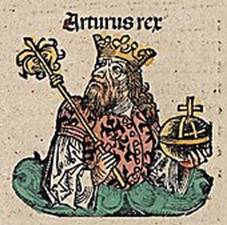
In short, that half century of total darkness can easily hide a character that somehow corresponds to the Arthur of legends, whose name has been cancelled by Damnatio Memoriae but whose work survived. Given the length of the period, it probably also hides his predecessor (King Uther?) and his immediate successors (Vortipor? Maelgwn?), presumably censored as Arthur himself, either because of him or for his same reasons.
But what these reasons could be, to trigger this complicate procedure?
Again, we can only offer conjectures.
It is a fairly consolidated fact that 5th century Britain was only partially Christianized and the Christians who populated it were split by heresies; so it is that that by the 6th century current England largely fell back into paganism in its part that had fallen earlier under Anglo-Saxon control, while the territories still held by Britons lived the experience of Celtic monastic Christianity, that the official Church will see for centuries as substantially Pelagian and therefore fundamentally heretical. Only in the seventh century would Pope Gregory the Great send St. Augustine to start the re-Christianization of the island.
For centuries the fear of the return of Evil (i.e., of the pagan gods) will torment the Christians through the memory of the "fall" of Britain. In reality, thanks to the censored leaders of the 5th century, Britain never fell into the hands of the barbarians; but Christianity effectively yielded - albeit for a short time and only in the east of England - to the return of paganism, and this is the fall which - according to the Church of the time - was worthy of being remembered, due to the pedagogical nature of this traumatic event.
The story of internal strife between Christians and the probable temporary success of a heretical leader, on the other hand, probably had to be cancelled...
Of course, the one examined here is only a possible scenario, but it is largely credible and above all congruent with the context of the period.
It is certainly supported by a series of clues and plausible considerations, but not by historical evidence: therefore, at the present state of our knowledge, any writing on "King Arthur" can only be fiction.
As it has been for over a thousand years.
***
Since the purpose of After Rome is to review what little we actually know of an era so important and so dark, trying to illuminate it with a touch of fantasy as realistic as possible and drawn from the available great legends, when we go to examine Britain's half-century of darkness in the light of literary tradition there is no reason not to use the material provided by over a thousand years of production. We tried to contextualize stories and characters of the legends based on what we know has really happened; so assuming that someone must have led the Roman-Britons to the battle of Mons Badonicus, why not call him "Arthur" when we talk about him, and selectively draw on his legend in order to describe his actions?
In developing the British plot of After Rome, I mainly stick to the work of John Morris and his The Age of Arthur (1973), despite the awareness of how controversial his work is and his method in general is not approved by most current historians; the fact remains that no one else has tried to analyse the entire historical context of Britain in the fifth and sixth centuries with an equally comprehensive and harmonious alternative work, and his work remains congruous even if not sufficiently supported by objective data... Exactly like our After Rome.
Using Morris's work critically as a general guide, however, I was able to observe that his work, just like that of most of his English-speaking colleagues, has a specific characteristic that catches the eye of a continental European: the detailed analysis is limited to Britain and at most goes to Brittany and the Normandy coasts without contextualizing the “Arthurian” events with what we know was happening on the continent in those same years. Even the hints of an alleged conflict between "Arthur" and a Roman emperor called "Lucius Tiberius" are left to their literal value without any analysis (no "Lucius Tiberius" has in fact ever existed, and the specific narration actually recall events of the IV century rather than of the V), which should include the much better-known contemporary events in the continental provinces of the Empire.
The point is that however things went in Britain in the dark period in which the Arthurian saga unfolds, these are contemporary to the reign of Clovis in Gaul. And it is interesting to observe how even the sources relating to this absolutely real sovereign are completely silent on the events that occurred beyond the Mare Britannicum in the same years in which the king of the Franks conquered Gaul. Gregory of Tours - the main source on the life of the king and an ecclesiastical in turn like Gildas - speaks to us of Saxons, Alamanni and Thuringians of Germany, of the Visigoths of Spain and of the Ostrogoths of Italy, but he does not even mention Britain, which is so clearly visible from the northern coasts of the reign of Clovis.
This fact, in addition to confirming the hypothesis of a well-coordinated Ecclesiastical Damnatio Memoriae against the British leaders of the period, leads to some considerations on the remarkable parallelism between the characters of the "Arthur" saga and those who revolve around Clovis. Both characters access the throne of an at least controversial father at the age of fifteen and find themselves fighting immediately for survival. They regroup in a few years a disunited and endangered kingdom, until it almost miraculously transforms it into a powerful state feared by all the neighbours. Both surround themselves with fellow warriors (the Frankish Leudes and the Knights of the Round Table) with whom they complete their conquests which, however, will not survive their death. Both are supported by a spiritual guide, the archetype of the elderly counsellor representing an ancient wisdom (Saint Remigius and Merlin). Both marry a queen with a complex character who will profoundly influence their government by often conflicting with them and undermining the long-term strength of their work (Clotilde and Guinevere). Both suddenly die still young, before completing their work and without leaving a safe and definite succession, also due to their marital affairs.
Now, this parallelism appears suspicious and may lead to the belief that what has come down to us about these two characters, so important and obscure at the same time, may have reached us contaminated by mutual influences. In particular, many of the subsequent additions to the Arthurian tradition (such as the events related to Lancelot and Guinevere which do not appear at all in the original texts) may actually have been inspired by events that took place on the continent. For this reason, I excluded them from the “Arthurian” story and dealt with them in the “Frankish” one.
Knowing practically nothing of the British leader who historically led his people to victory at Mons Badonicus and put an end to the Saxon invasion by laying the foundations for the establishment of the various kingdoms that then coexisted in Britain for five centuries until the unification of England, over the course of the narrative we have tried to follow the original plot of the Arthurian legends, which could in fact be the fictionalized reflection of real facts handed down orally for centuries; of course we have been adapting this plot as much as possible to the few known facts and contextualizing it to the known historical situation, using the few documented historical characters in the roles proposed from the legend in order to fill in the numerous gaps in the historical plot that has come down to us.
Thus, in After Rome the internal strife between Britons date back to the social conflicts of the late Roman diocese; the frictions between the great aristocratic families are intertwined with the tribal ones between Celtic clans and with the doctrinal conflict between the various Christian currents. The island as a whole is anything but Christianized, and the beliefs connected with the ancient religion still pervade the countryside, adding to the new pagan superstitions brought to the island by the barbarians.
The very geography of Britain is different from what it is today, with large areas of countryside submerged by marshes and even the sea itself; so the location of apparently fantastic places like Avalon and Camelot becomes plausible, albeit in a wholly hypothetical form.
And the legend of Arthur unravels once again, flowing fluidly along a path drawn by the historical context known to us ...
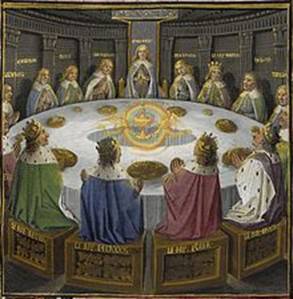
One last consideration.
What links the massacre of the leadership of Britannia outlined by John Morris on the island of Thanet, the Teuton legend of the Nibelungen Saga and the episode of the assassination of Odoacer in Ravenna at the hands of Theodoric from Verona (Theudric von Bern)?
The first case is a plausible but unproven historical hypothesis, the second a romantic legend and the third a historical event attested but which occurred under unclear circumstances; each of the three could have happened or not, in the terms reached to us or in a significantly different way. Certainly, all three have some historical basis but they are shrouded in legend and have probably come to us completely changed.
But they sure look incredibly similar to each other.
A war that ends, an offer of pacification by a treacherous leader, a betrayal inspired by a vengeful queen, and a banquet where the bloodbath is consumed, that puts an end to the lives of countless important characters.
A historical event that inspired others, or a single episode remembered by legends belonging to different traditions? Or still, a legend that inspired real events?
We will probably never know; but we can certainly recognize in national traditions different parallel stories reported through the centuries and dating back to the same, short period in which most legends were born, destined to forge cultures that are different today, but all dating back to a common matrix.
A single culture which then split into different national traditions, but which originates in the same common place: Europe.





 Admin
Admin 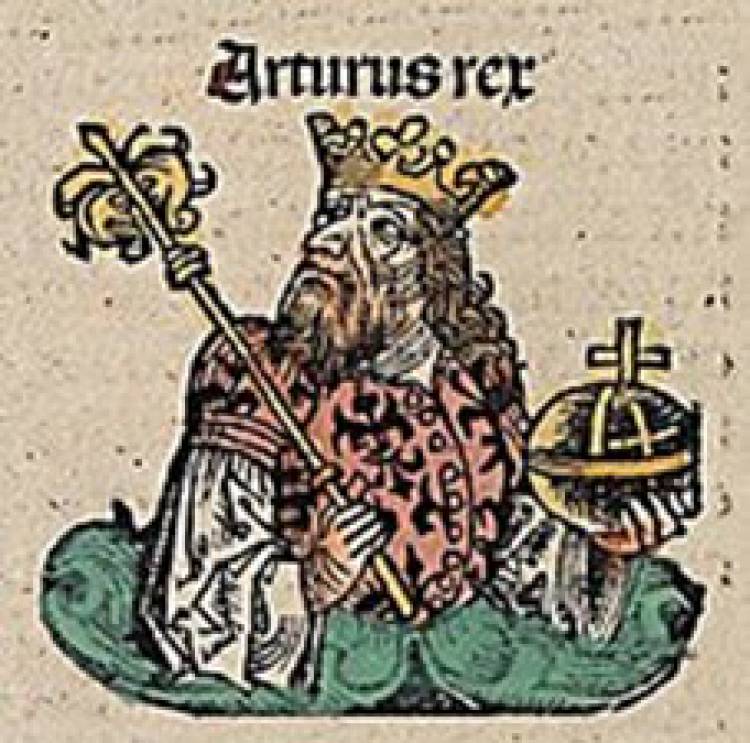
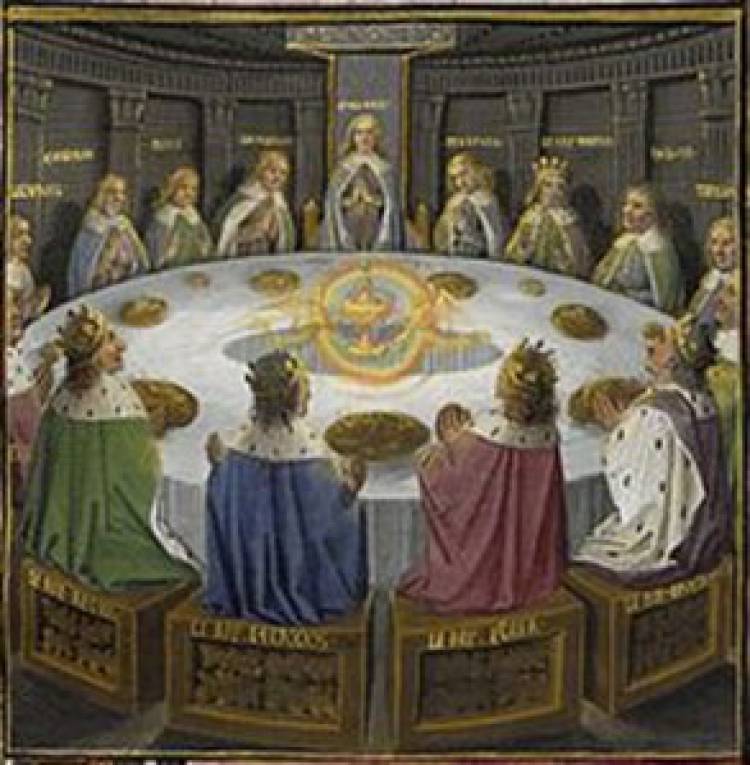
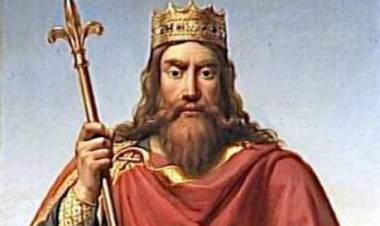
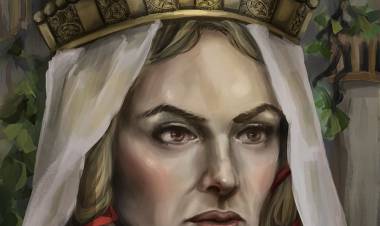
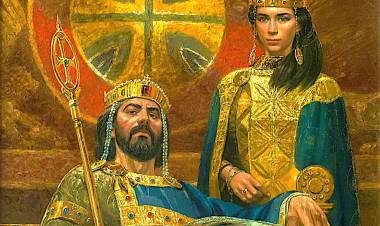








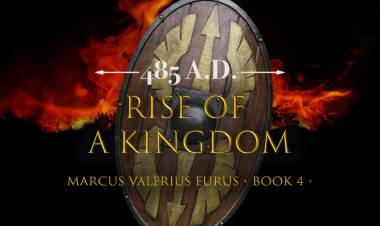
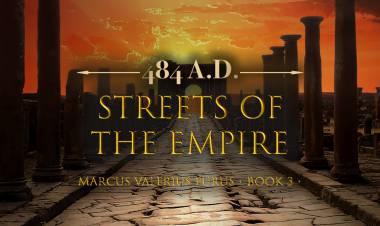
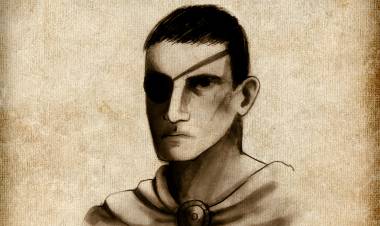
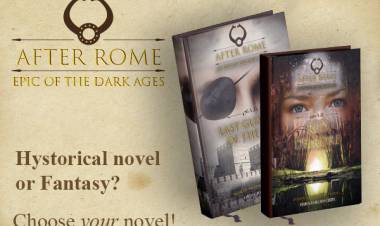
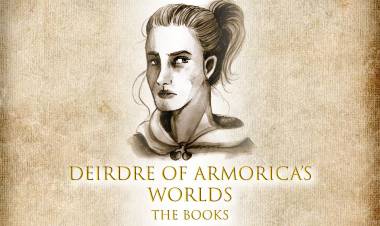
Comments (0)
Facebook Comments (0)